In an ideal world, the metrics that drive early draft picks would be the same ones that determine long-term success in the NFL. Teams would select players who not only look promising on paper but also deliver sustained value on the field.
But reality isn’t that clean.
Subjective evaluation during recruitment opens the door to bias, which can lead to mismatches between what gets a player drafted and what actually leads to on-field performance. To investigate whether this misalignment exists, our data science team analyzed key position groups — quarterbacks (QBs), running backs (RBs), and wide receivers (WRs) — and the metrics that shape their trajectories.
Methodology: Drafted vs. Successful
We built two machine learning models for each position:
- First Round Model: Predicts the likelihood a player is drafted in the first round.
- NFL Success Model: Predicts whether a player will succeed in the NFL over multiple seasons.
Both models were trained using publicly available college performance data (averaged across a player’s career) and NFL Combine results. We used interpretable machine learning to identify the most influential features for each model. Comparing the top metrics side-by-side reveals where the gaps lie — and how decision-makers might bridge them.
Quarterbacks: The Dual-Threat Advantage
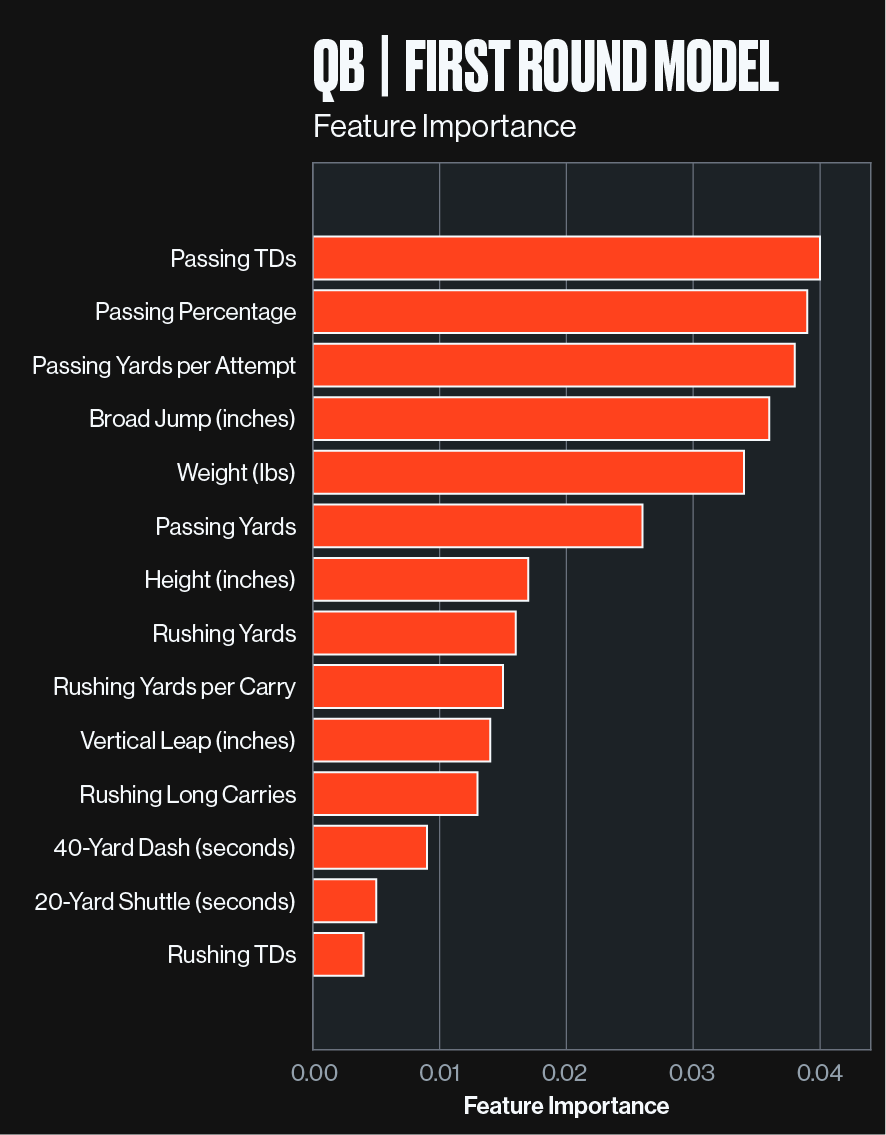 | 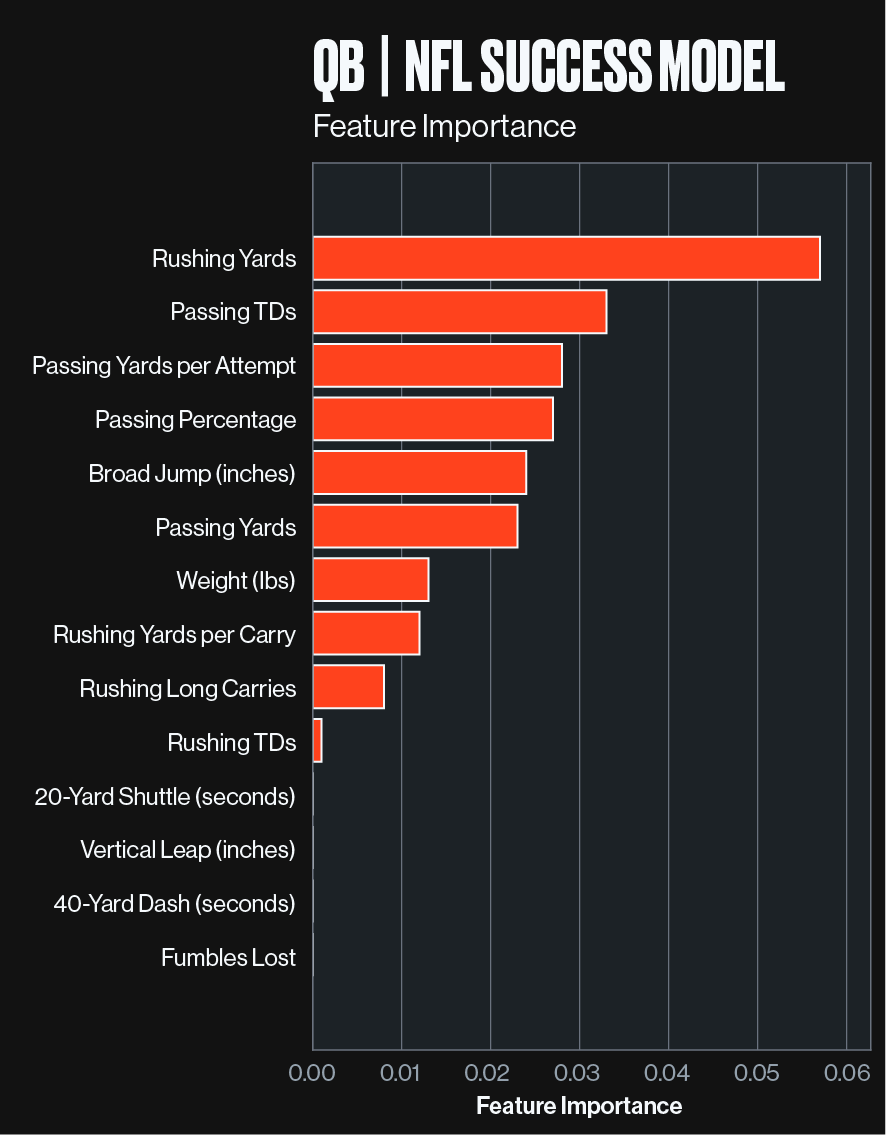 |
In the First Round model, elite passing numbers stand out — Passing Touchdowns, Completion Percentage, and Yards per Attempt are all strong predictors of early draft status.
However, the NFL Success model paints a slightly different picture. While passing remains important, rushing ability becomes a stronger driver of long-term success. This trend has become increasingly evident since 2010, a period that coincides with the rise of more mobile quarterbacks entering the league. The implication? Quarterbacks need to either be elite passers or offer a dual-threat profile — strong passing plus effective rushing. Over time, this dual-threat capability has emerged as a more consistent predictor of long-term success. Being a good-but-not-great pocket passer may not be enough.
Consider recent history. In 2018, Lamar Jackson was the fifth quarterback taken in the draft. In 2020, so was Jalen Hurts. Today, both are standout performers with MVP honors and have left a significant mark on the league. Hurts has already made two Super Bowl appearances, including a Super Bowl victory, while Jackson has redefined the quarterback position with his dual-threat capabilities. Their rushing ability clearly contributed to their team impact, and was likely undervalued at draft time.
Running Backs: Rethinking the Role of Receiving
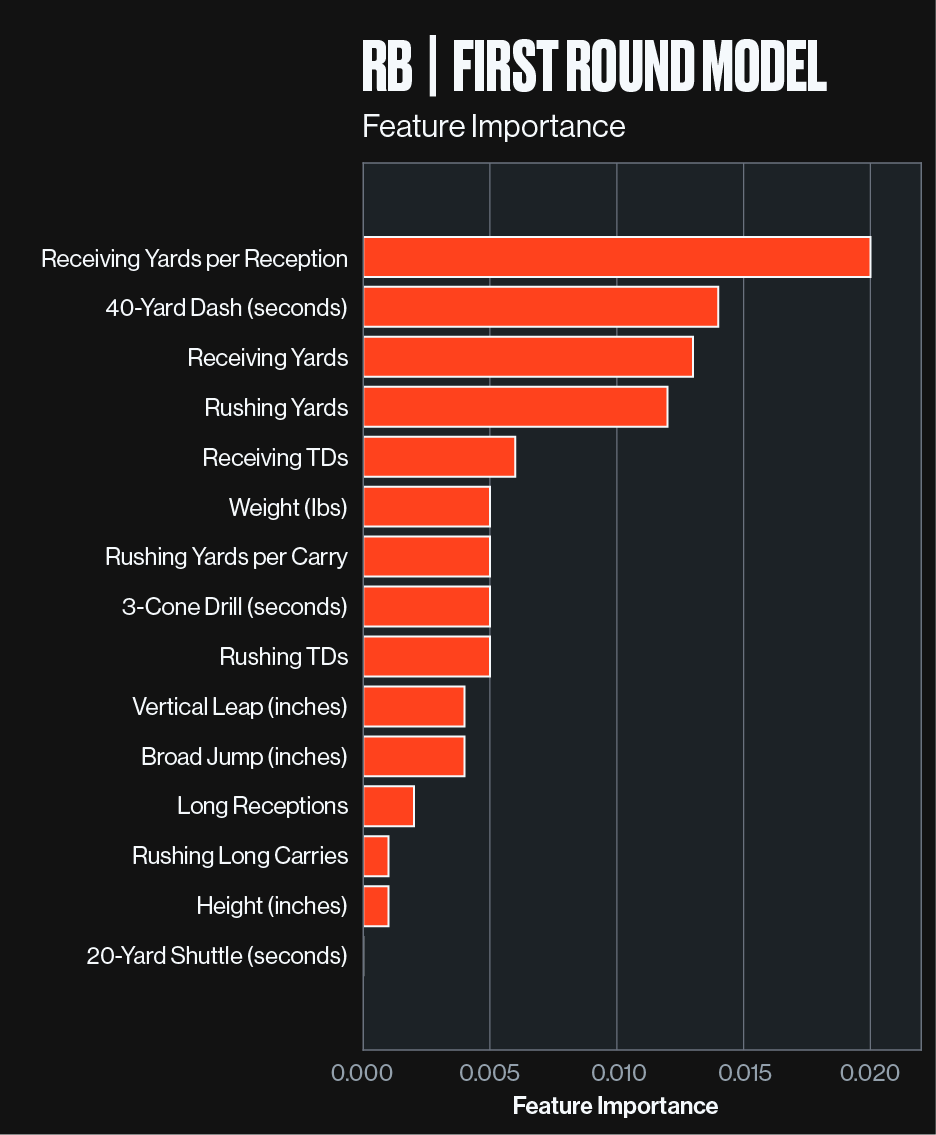 | 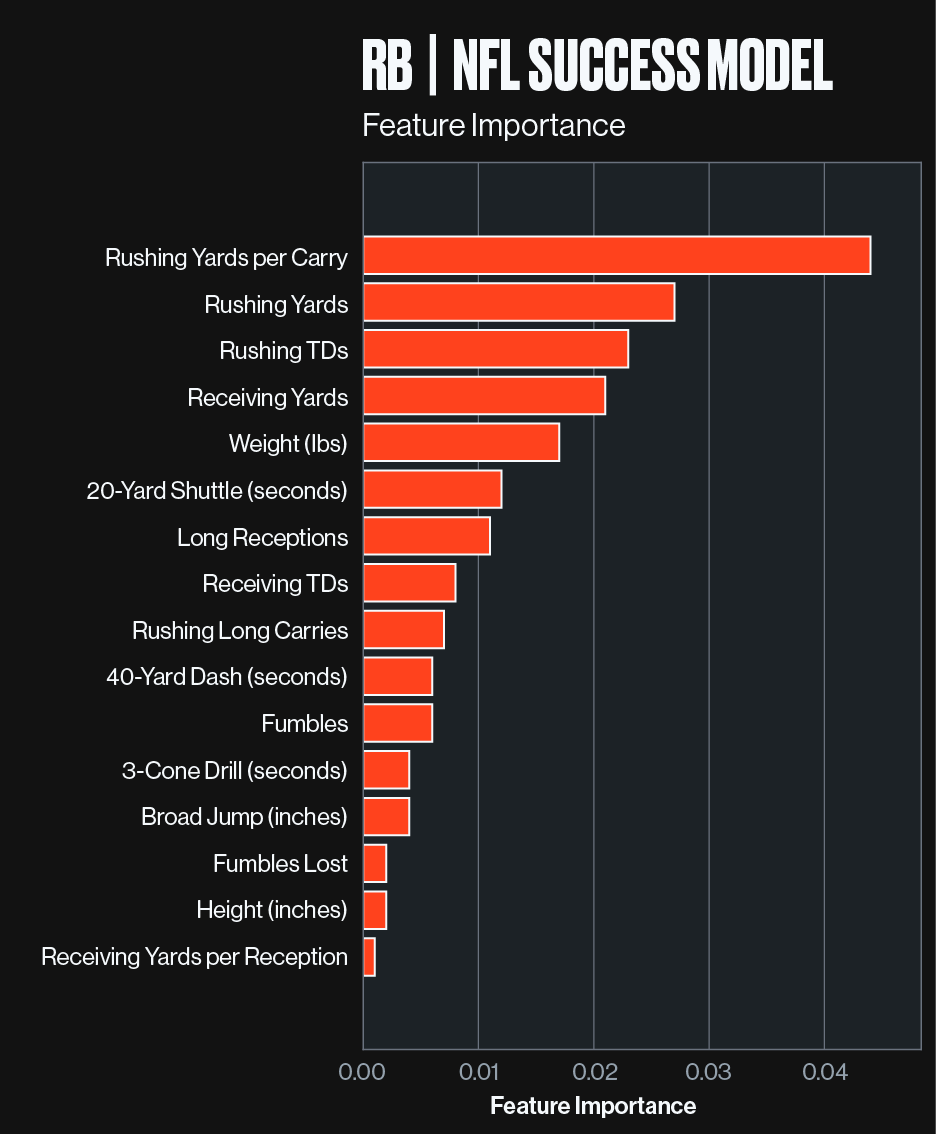 |
Interestingly, the First Round model for running backs favors receiving metrics over rushing. Receiving Yards per Reception and total Receiving Yards both outrank traditional rushing indicators.
But the NFL Success model flips that script. Rushing Yards per Carry tops the list, followed by total Rushing Yards and Rushing Touchdowns. Receiving remains relevant, but secondary.
This suggests that while receiving skills are viewed as a draft-day differentiator, they may not be the strongest foundation for sustained NFL performance. Teams might be overemphasizing versatility at the expense of rushing dominance.
Another takeaway: Speed isn’t everything. The 40-Yard Dash shows up as a key feature in the draft model but carries less weight in the success model. Instead, the 20-Yard Shuttle — a better proxy for short-area agility — appears to be more predictive of long-term performance.
Wide Receivers: A Rare Alignment
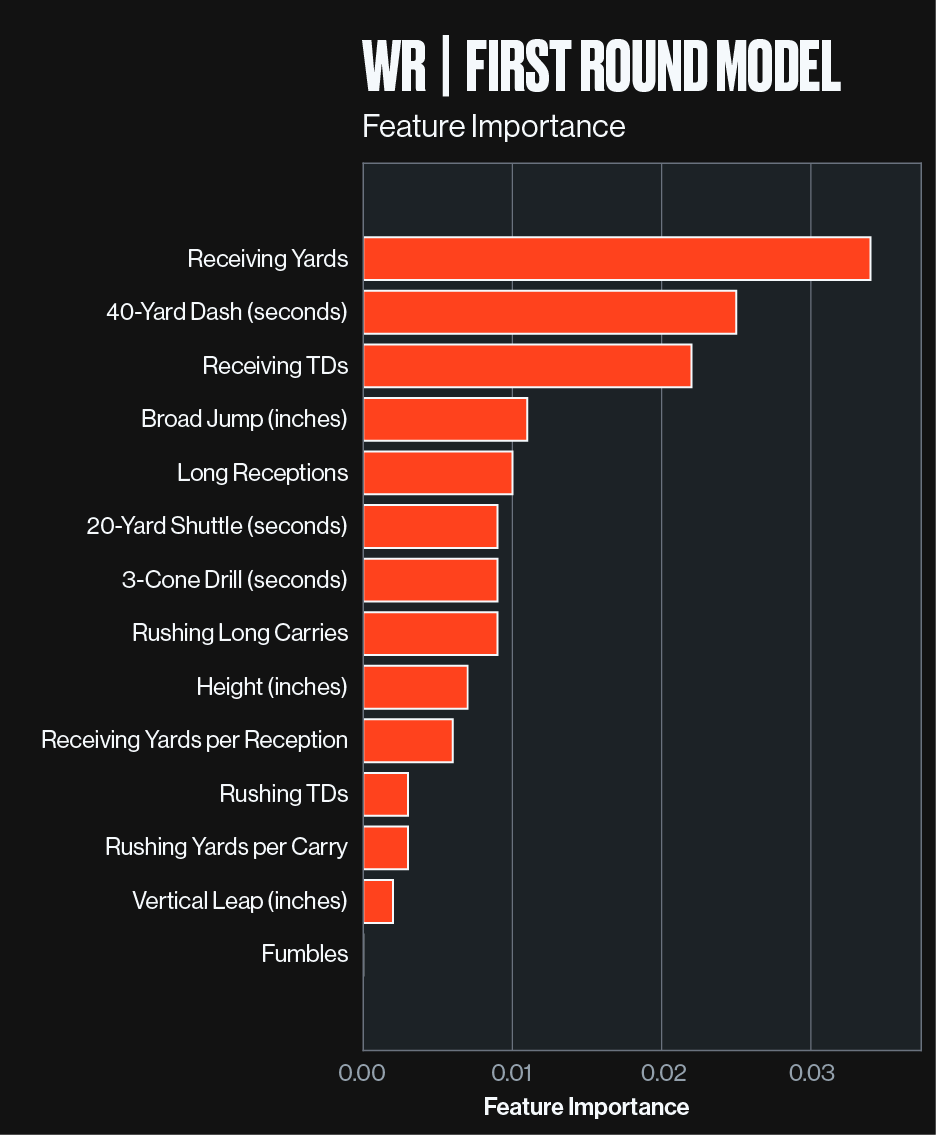 |  |
For wide receivers, there’s far more consistency between what gets players drafted and what makes them successful.
Both models rank Receiving Yards as the top indicator, followed by the 40-Yard Dash. Metrics like Receiving Touchdowns and Long Receptions also appear near the top in each model. In this case, front-office strategy appears to be better aligned with real-world results.
Final Takeaway: Closing the Gap Between Draft and Delivery
Our analysis reveals clear gaps between draft criteria and success metrics, particularly for quarterbacks and running backs. These gaps may reflect long-held biases or outdated heuristics that don’t match what actually drives performance in today’s NFL.
By realigning talent evaluation around the metrics that matter most for long-term success, teams can sharpen their draft strategy and make smarter, more sustainable investments in their future.




